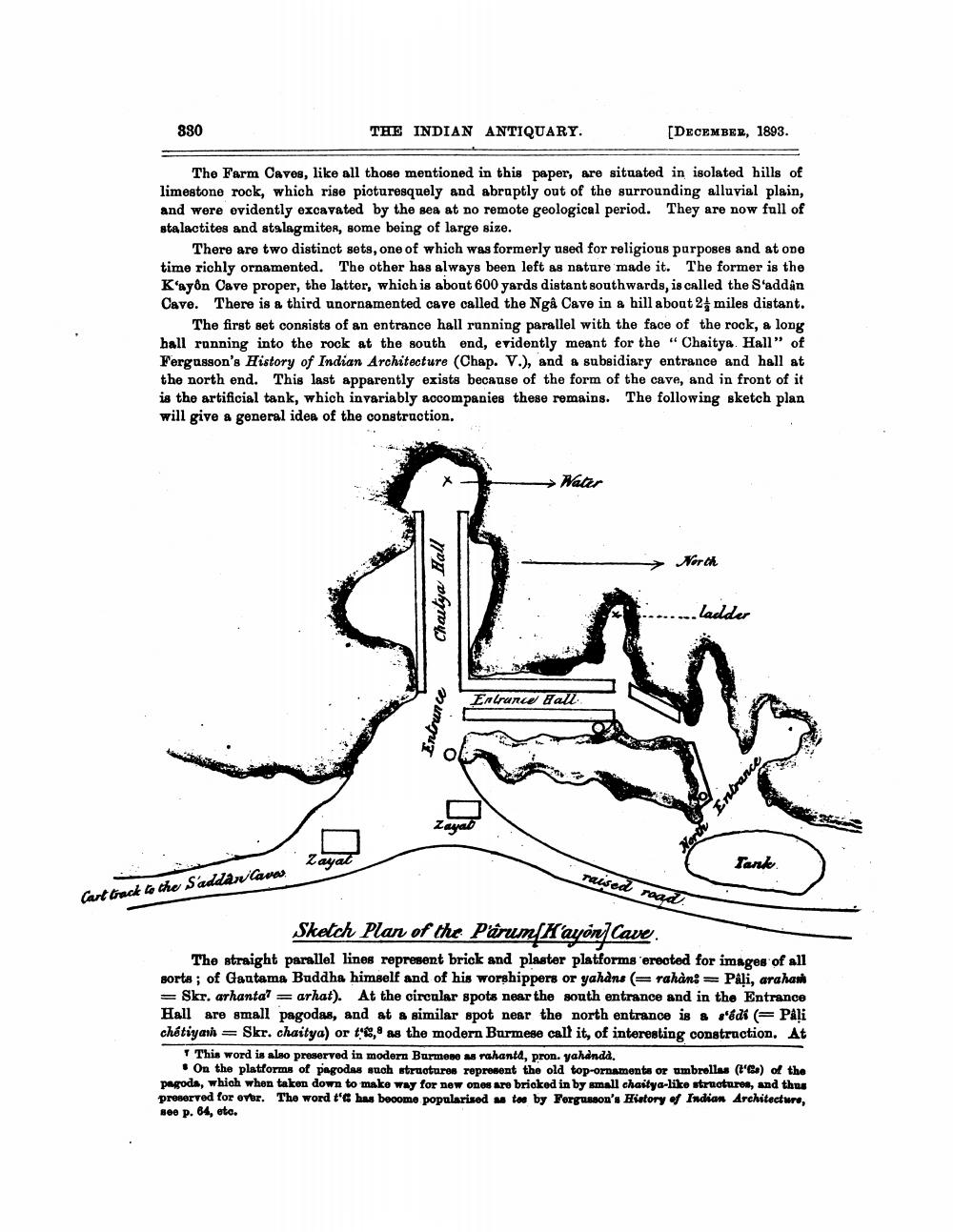________________
880
THE INDIAN ANTIQUARY.
[DECEMBER, 1893.
The Farm Cavog, like all those mentioned in this paper, are situated in isolated hills of limestone rock, which rise picturesquely and abraptly out of the surrounding alluvial plain, and were evidently excavated by the sea at no remote geological period. They are now full of stalactites and stalagmites, some being of large size.
There are two distinct sets, one of which was formerly used for religious purposes and at one time richly ornamented. The other has always been left as nature made it. The former is the Kayôn Cave proper, the latter, which is about 600 yards distant southwards, is called the S'addan Cave. There is a third unornamented cave called the Ngå Cave in a hill about 2 miles distant.
The first set consists of an entrance hall running parallel with the face of the rock, a long hall running into the rock at the south end, evidently meant for the “Chaitya. Hall" of Fergasson's History of Indian Architecture (Chap. V.), and a subsidiary entrance and hall at the north end. This last apparently exists because of the form of the cave, and in front of it is the artificial tank, which invariably accompanies these remains. The following sketch plan will give a general idea of the construction,
-
Water
→
North
Charitya Hall
- ladder
Enlrunu Hall
.
.
Monta Entrance
Zavad
bayat
naised
Cart track to the Saddan cara
raad
Sketch Plan of the Pârun Kayon] Cave. The straight parallel lines represent brick and plaster platforms erected for images of all sorta ; of Gautama Buddha himself and of his worshippers or yahans ( rahan: Pali, arahan = Skr. arhantal = arhat). At the circular spots near the south entrance and in the Entrance Hall are small pagodas, and at a similar spot near the north entrance is & rádi (= Pali chétiyan = Skr. chaitya) or t o as the modern Burmese call it, of interesting construction. At
* This word is also preserved in modern Burmese as rahanta, pron. yahanda.
. On the platforms of pagodas such structures represent the old top-ornaments or umbrellas (Ge) of the pagoda, which when taken down to make way for new ones are bricked in by small chaitya-like structures, and thus preserved for over. The word t'c has become popularised us too by Fergusson's History of Indian Architecture, see p. 64, etc.




